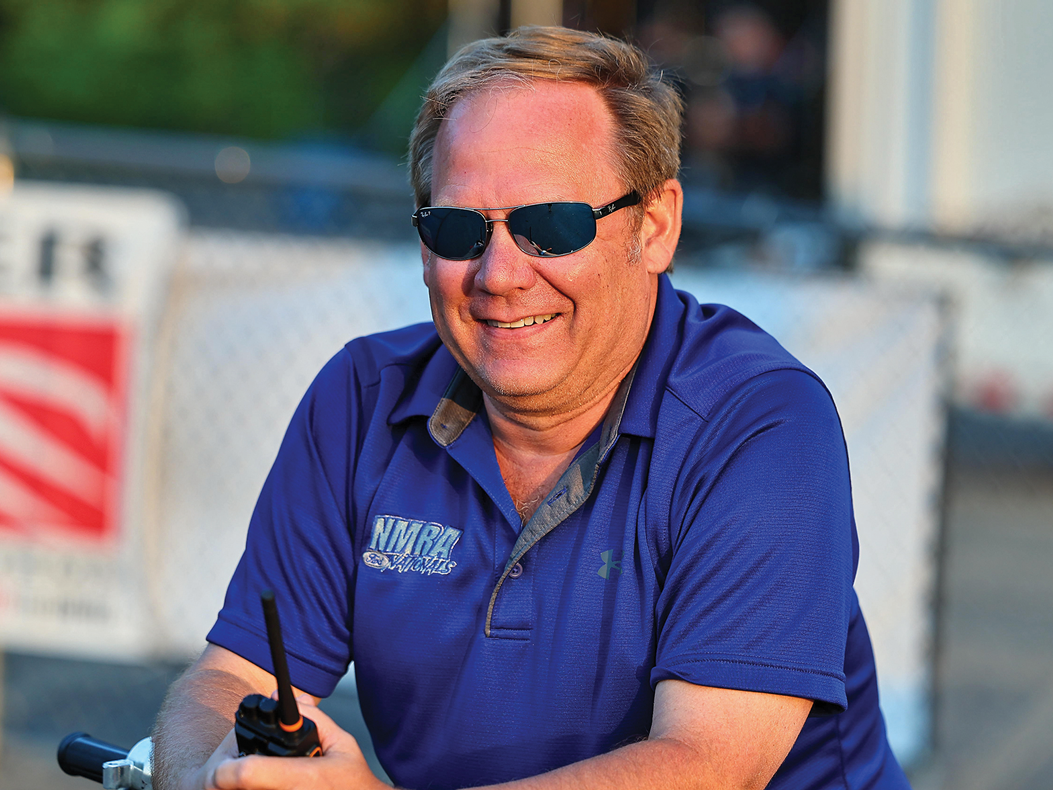Industry Insights: Megan Leatham

As executive director of the Pikes Peak International Hill Climb, this dynamic leader shares her view from 14,000 feet, including how the event became a proving ground for innovation, the operational challenges of a mountainside road course, and why “there is no other race in the world like it.”
For one day in June, drivers and teams from around the world converge each year on one of the highest peaks in North America. There, from dawn to dusk, a century-old ritual is repeated: driver against mountain, defying all odds, seeking to ascend a pitched and winding road to the peak, faster than all who have tried before.
The Broadmoor Pikes Peak International Hill Climb brought to you by Gran Turismo is a motorsports event unique in every way. The 12.42-mile race is conducted on a public roadway to the 14,115-foot peak, as it has been since the event debuted in 1916. Teams vie for supremacy in six different classes, and across 10 decades few events can boast the emotional and iconic presence of the Pikes Peak Hill Climb, located near Colorado Springs, Colorado.
Megan Leatham joined the Hill Climb in 2011 as executive director, and she has presided over a period of robust growth for the event. Leatham is quick to point out that she had—literally—no motorsports experience when she joined the company, but her dynamic leadership has prevailed. The “Race to the Clouds” is going stronger than ever while preparing for a milestone 100th running in 2022.
A standout basketball player at Whitman College in Washington, Leatham has channeled her competitiveness and leadership skills into a variety of endeavors. In addition to her role at Pikes Peak, she continues to serve as a volunteer basketball coach at Colorado College. She earned her master’s degree in public administration from the University of Colorado at Colorado Springs and previously worked with the US Golf Association.
The 99th edition of the Pikes Peak International Hill Climb takes place on Sunday, June 27, and as she and her team prepared for the event Leatham took a few minutes to visit with Industry Insights.
(Editor’s note: Our interview took place just days after the sudden passing of longtime Pikes Peak International Hill Climb CEO and Chairman of the Board Tom Osborne. PRI extends our sincere condolences to Tom’s family and the staff of the event.)
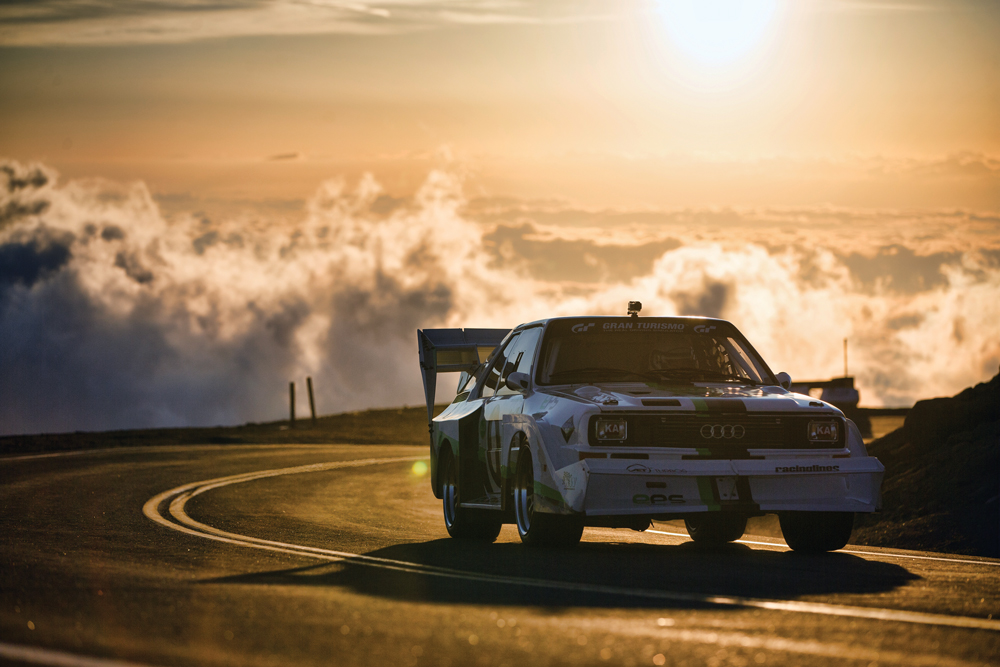
PRI: The Pikes Peak International Hill Climb is an iconic event in American motorsports, and it has endured for nearly 100 years. Why has this event thrived? What’s the key to people coming back, year after year?
Leatham: There is no other race in the world like Pikes Peak. And a lot of that has to do with the venue. The mountain isn’t going anywhere; I think that’s what makes it so exciting and has helped it endure since 1916. To one degree, we don’t own our venue, so we have many challenges. To the other degree, the venue isn’t going anywhere. Through wars and pandemics and everything the world has seen, the mountain just stays stable. So the history and legacy by far is one of the greatest draws for not only the spectators but also the competitors. To say you summited Pikes Peak on race day has to be one of the most exciting moments in the world for these champions.
PRI: I’m trying to grasp the logistics of a race course that is 12.42 miles up the side of a mountain. To begin, how is the course maintained throughout the year? Does it require a lot of upkeep?
Leatham: Great question. It’s a really interesting partnership, as I mentioned we don’t own our venue. We have a three-way agreement with the city of Colorado Springs, which is Pikes Peak - America’s Mountain, and Peak National Forest. The maintenance of the road on a day-to-day basis is up to the city of Colorado Springs and Pikes Peak - America’s Mountain. Our agreement is literally for one day per year, and that’s race day. Their job is to maintain that road for tourists for 364 days per year. We have a fantastic relationship with the city, but what makes Pikes Peak so unique is that the road is meant for tourists traveling 30 miles an hour. It’s not meant to be a race course, and that is what makes it so exciting. For one fantastic day each year, everything goes away and the road turns into a race course.
PRI: Tell us about the people logistics. How many people do you need to conduct the race?
Leatham: Throughout the calendar year we have five full-time staff members who work for Pikes Peak International Hill Climb. We also have about 10 full-time contract workers with whom we work very closely for 12 months out of the year. Come June, the game changes. We bring in a hefty load of summer workers, summer staff. Some college kids, interns, that kind of thing. And there are 150 race officials, including course workers, flagmen, and we also have people doing some backup timing. We also have our safety workers, our people who handle registration, and another 100 volunteers who handle parking and that sort of thing. It honestly takes a village, Dave, it really does.
What makes this race so unique is the support we have from the local community. We work very closely with every jurisdiction throughout the city. The race course itself actually goes through two different counties, and it weaves in and out of El Paso County and Teller County. We work with law enforcement from both of these jurisdictions. We have about eight fire trucks up there, and it’s really a community effort. That’s one of the most exciting things; it’s an international race but also involves great numbers of local people.
PRI: When you began working with the Hill Climb, were there things about the logistics or planning that surprised you?
Leatham: I’ve been with the Hill Climb for 10 years now, and when I started I was the only full-time staff member. The race has grown incredibly since then. So much has changed from a logistical standpoint. When I first saw the race that first year, there were some huge operational gaps. Everyone was doing a great job holding the race together, but there were no parking plans and no systems in place. It was kind of a free-for-all. And the race has changed so much over time, as the course turned to all pavement. The business model of the organization has also changed. About 15 years ago the organization was in some financial difficulty, having a hard time staying stable. That was one of my major goals; we are a non-profit organization and we needed to be really good stewards of the event. We needed to make sure that no matter what comes our way, we have the financial stability to continue on. A great example of that has been the pandemic, something we never thought would happen. We were able to operate at only a slight deficit last year, but because we had been taking care of the financial piece, we could continue the legacy of the race.
The mountain is not going anywhere, but the organization could go away if we are not good stewards with our funds. So we’ve worked really hard on fundraising and making sure we are stable and can endure curve balls that come our way.
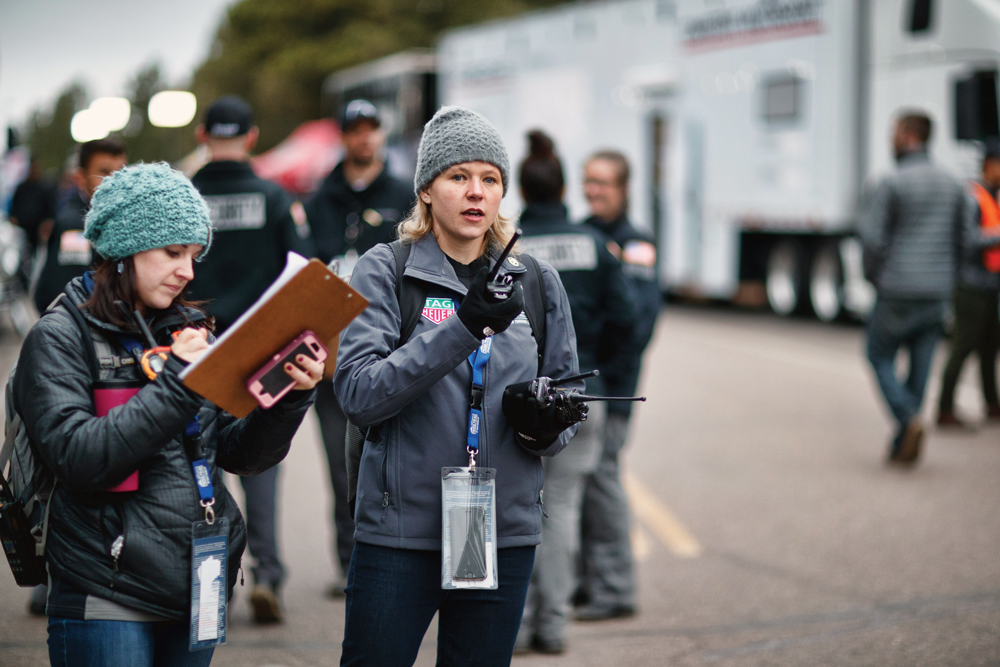
PRI: You mentioned the growth of the Hill Climb over the past few years. What’s the key to sparking that growth?
Leatham: I don’t have an exact answer for you. A lot of things have changed, and one is that the beauty of Pikes Peak can really be captured through photos. I think with our presence on social media, (more) people are seeing that beauty. How often can you say you’re above the clouds, the sun is rising, and you’re watching an auto race? Social media has opened the world’s eyes to Pikes Peak, more than it has before.
Now that the road is fully paved, the manufacturers are putting in a full-blown effort to prove their technology on Pikes Peak. That’s another thing that makes this race great—we are a proving ground. The manufacturers want to invest their money and time to be the best and break the record. That’s another major thing.
Pikes Peak has been the proving ground for automotive innovation since the beginning. The mountain and the race course itself have been the testbed for brake fluids, tires, batteries, powertrains, and more. And electric vehicles; we’re seeing a huge surge in EV from manufacturers throughout the world. People want to prove it; if you can prove it on Pikes Peak, you can prove it anywhere.
PRI: That was my next question. Innovation has always been a part of the Hill Climb, and it’s always been interesting that you never really quite knew what types of vehicles were going to show up to compete. That seems to be some of the allure there, for both competitors and spectators. It is different, and these are not cookie-cutter cars. We’re seeing the cars evolve right before our eyes.
Leatham: Absolutely, I think that’s another of the things that makes this race great. You can have the local competitor who has been racing for 20 years; think about Clint Vahsholtz last year, he won the overall and he’s been racing this event for 20-some years, building his car from his garage in Woodland Park. At the same time, you have Volkswagen come in and put in millions of dollars to prove that they can become an all-EV company. And you can have both at the same time! That makes this race unique. It’s really interesting to watch the fans, because many times they are not there to see the full-blown manufacturers; they’re there to see the unique one-off cars which they’ve been following the building process online for the last few months. We’ve got the full gamut here.
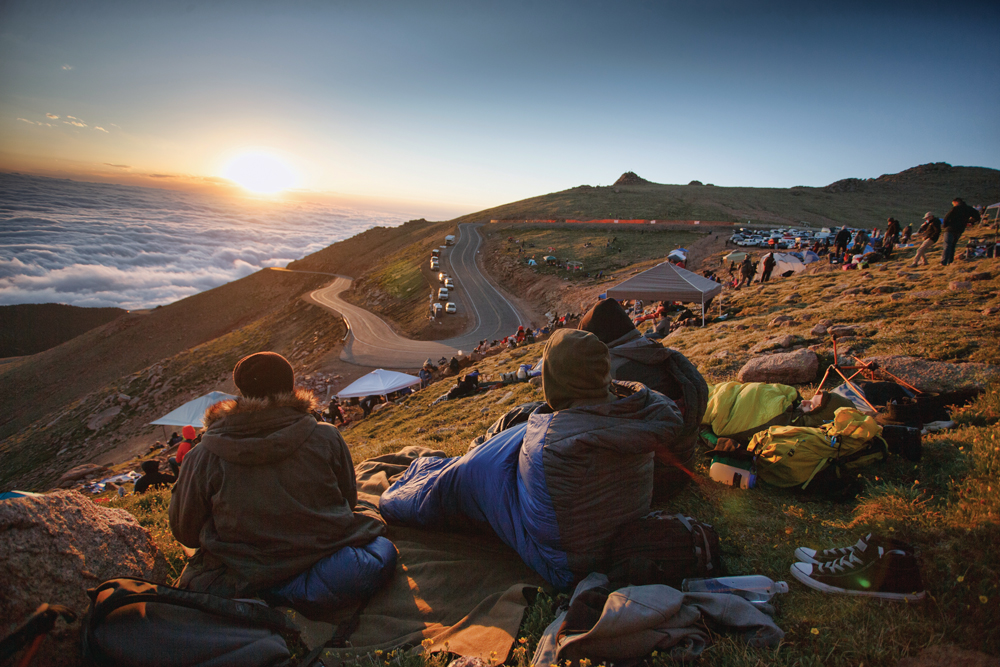
PRI: On the flip side, you and your staff have to manage the innovation through rules and safety mandates. Is it difficult to stay on top of the technical advances of the past few years? And what is the process of adjusting your rules from year to year?
Leatham: We have an 85-page rulebook, and that’s a good read. We have a lot of different committees, and a race director, Randy Ruyle, and a director of competition, Dan Skokan. We have our rules committee or race committee that is made up of board members and technical experts and they drive the rules. They meet and decide the rules and the divisions and any changes. One thing that has changed a lot over the past 10 years is that we are trying to be more consistent. Our goal is to make minor tweaks year after year without major overhauls. That allows people who build their cars to our rulebook to use those cars year after year. Obviously, we are a non-profit, so we are governed by a board of directors. Any change by a committee is approved and signed off by our board of directors.
PRI: Electric vehicles have done very well there in recent years. Why is electric power so effective in the Hill Climb?
Leatham: As you mentioned earlier, not only is the course 12.42 miles, the elevation at the start is 9,390 feet. When you finish, it’s 14,115 feet. So elevation gain is generally the answer to that question. Electric vehicles are sometimes the top choice at Pikes Peak due to the fact that elevation gain does not affect electric vehicles in the way that it affects internal combustion vehicles. And electric vehicles don’t have to worry about the thin air at 14,000 feet. Now, the challenge for an EV is that it must be charged. Pikes Peak is one day, one shot. So that’s a lot of eggs in one basket as far as red flags and potential things that can turn around competitors who have to charge their vehicles. Practice days are another thing—most competitors try to get as many runs in as they can every morning; the gas-powered vehicles get back to the bottom, get back in line and head back up the hill. But the EV machines have to re-charge. So it’s a brand new component that is really exciting to watch play out.
PRI: Do you envision electric vehicles becoming more and more prevalent there? What’s your instinct at this point?
Leatham: If you watch the change in consumer vehicles across the world for the next 10 years, I see that filtering down to the Pikes Peak Hill Climb, especially as manufacturers want to prove that EV’s work. I think they will continue to see Pikes Peak as an effective proving ground.
PRI: Will we continue to see traditional internal-combustion power continue to be a part of the event for some time to come? Is it part of the thought process there that you want to always have a presence of both?
Leatham: Absolutely. Internal combustion engines will still be prevalent here. We might see the numbers decrease slightly as the years pass, but internal combustion engines are going to hold strong in our competitor fields for many years to come.
PRI: I suspect you have heard many times from both competitors and spectators alike that Pikes Peak is a “bucket list” event. Does the unique nature of the event help in terms of promotional opportunities? Is that something you can leverage in your marketing?
Leatham: Well, yes and no. One of the great things about Pikes Peak, Dave, is that we don’t specifically have to market it as much as you would think, because it markets itself. One thing the race committee and board of directors and staff are working hard at is to obtain quality over quantity when it comes to competitors. Our goal is to have the best vehicles and best drivers at Pikes Peak. We want to look at the fastest time of the year and the slowest time of the year and over time shrink the margin between the two. So when you talk about a bucket-list event, of course. It is a bucket-list event for many people.
We have a very stringent selection process, and anyone who is interested in competing here fills out a thorough application. They must submit their racing resume, submit references, submit photos of the vehicles, specs, roll cage design. The selection committee meets and, similar to the NCAA basketball tournament, the field is decided then and there based upon all the factors submitted. Yes it is a bucket-list event, but not everyone can race at Pikes Peak. You must be a professional race driver or have the experience needed to enter the event.
PRI: Let’s talk a little bit about the psychology of those who race up the mountain. What is it about this event that so intrigues competitors?
Leatham: The competitors, honestly, are the true heroes of this event. One of my favorite things is watching them on race day and looking in their eyes and seeing how focused each of them are. It’s one run against the mountain. One shot. They work all year long for one shot. I think that alone is what keeps people coming back. You can have great practice day runs, you can have your vehicle tuned to the best of your ability, but because they never get to race the course from bottom to top there is always so much in question each time the competitor steps to the starting line. It’s a huge, internationally famous event, but it also has a small family atmosphere at the same time.
The competitors often speak about that. Since the early years, teams have really helped each other out. They know what it takes to get here, and they help each other out as needed. There have been many stories of loaning parts, and long hours spent working on someone else’s car. Last year some of the Porsche engineers worked on Daijiro Yoshihara’s Toyota on race day when he was having some issues, and Daijiro ended up winning his division. So you bring in all of that, and you bring in the camaraderie, and you bring in the fact that we have the best spectators in the world, that’s why people want to come and race Pikes Peak. But ultimately, it’s one run, man versus mountain, and that’s what it comes down to.
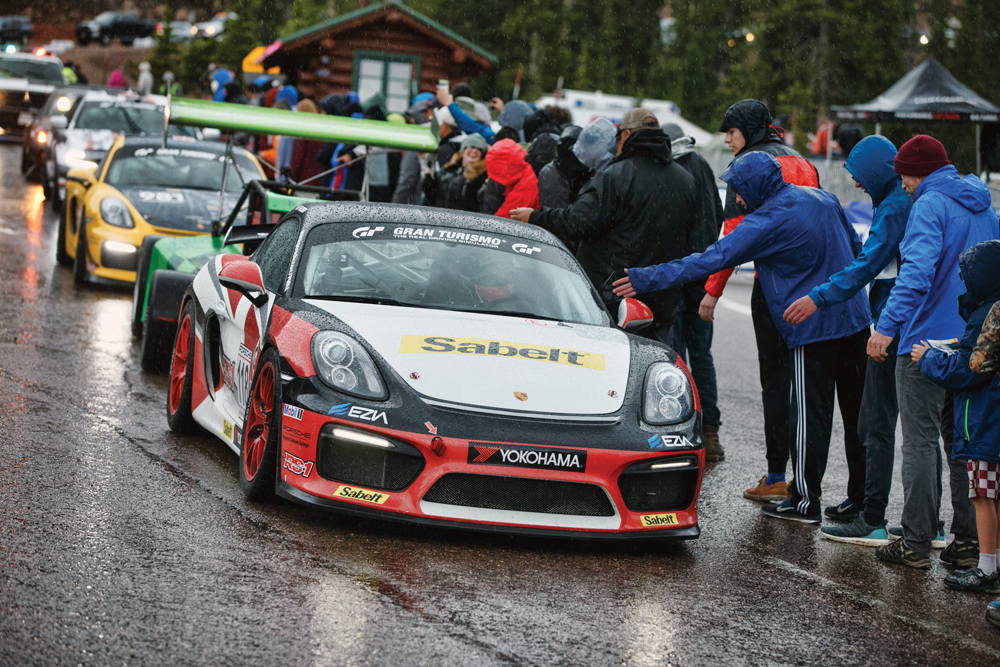
PRI: That is a fascinating point, the fact that everyone gets just one shot at this and it’s another year before they can try again. I would think that would lend a lot of pressure for those of you on the official or operational side as well. Is that the case?
Leatham: Yes, absolutely. From an operational standpoint, we want things to go smoothly for the competitors, for the media, and for the spectators. We only have one shot at it each year as well. And that makes the race so unique. We have a saying: “The mountain decides.” That’s 100% true about this event. The mountain decides, and the minute you think you have her figured out, she’ll toss things at you that you didn’t expect. If it hasn’t happened on Pikes Peak yet, it will. The thing you think won’t happen, always will. The mountain decides and that’s what makes us so unique. Nature is extremely humbling, and when you put on a motorsports event on a 14,000-foot mountain, the mountain decides. She owns it. Every year is completely different, and we don’t know if we’ll have rain in the afternoon or an ice storm in the morning, or sunny at the starting line and snow at the finish line. Who knows if we’ll have a perfectly clear day with no red flags? The mountain decides, not just for us but the competitors as well. We only get one shot at it every year.
PRI: Shifting gears a little bit, let’s talk about your role there. How did you get involved in the Hill Climb?
Leatham: To be candid, I do not have a motorsports background. I had never seen the event before I was hired here. I kind of fell into the position more from an operational standpoint, an organizational standpoint. It’s a funny story…Tom Osborne, the chairman of the board, took a swing and hired me 10 years ago, and I said to him, “I don’t know anything about cars and I’ve never seen this event, but I know I can do this job.” Tom hired me on the spot, and I have loved every day of this job. Tom was a friend, a mentor, a father figure, not just to me but to many people. He was a giant in our city. He’ll be missed very much, but I know that his legacy here is exactly what all of us would want to do. Over the last 10 years we’ve been able to elevate this race from an operational standpoint, and we’re going to continue to work toward that goal.
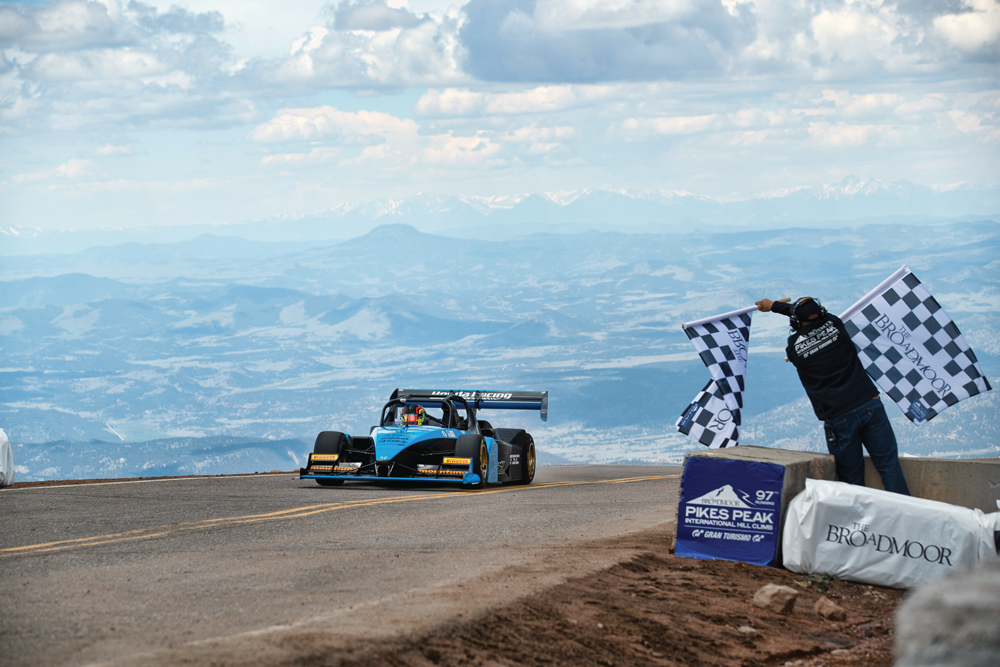
PRI: You have an extensive background in basketball, including an ongoing role as a coach. Coaching is a genuine test of leadership skills, I think. Has your coaching experience helped you in business leadership?
Leatham: I would say yes. Sports have always been in my bloodline, so even though I’m not personally a motorsports enthusiast, I understand sports and competition. I understand what butterflies feel like. I understand game day. Sports have shaped me and helped me become the person I am. I played sports throughout high school, played basketball in college. Then I went on to coach, because I know the impact sports makes on a person’s life and I wanted to help instill those same values in people I’ve coached. From a business standpoint, I also agree that coaching is about leadership. Leadership is something that can always be cultivated and done at a higher level, and there is something innate about that. I grew up playing sports and coaching, and knowing what it’s like to lose a game, knowing what it’s like to hit a buzzer-beater. All of those things, knowing how to pep up your team when they are down. I would not be an executive today without that experience as a coach.
PRI: Many of our readers are probably intrigued by the idea of witnessing the Hill Climb. What would you tell them that might tip the scales and get them to make the trip to Colorado in June?
Leatham: Once you see it, you’ll be wondering what you’ve been missing all these years. For me, one of the craziest parts is, throughout the year I’m up on Pikes Peak quite a bit for different things, and it’s very still. It’s a mountain. Even though there are tourists up there, you can walk off the beaten path and it’s quiet and still. You can hear the birds chirping, you can hear the deer tromping around. And then one day, for one magical day, all you hear is engines running. When you mix motorsports with the beauty of nature, there is nothing else in the world like it.
PRI: We’ll wrap up with this, Megan. What’s on the horizon for the Hill Climb? What’s on your wish list that would nudge the event to the next level of success and excitement?
Leatham: Next year is our 100th running, so we are very excited about that in 2022. Our long-term goal is to get this race in front of as many people as possible. We are excited to continue improving our livestreaming, and obviously there are technical difficulties in trying to livestream an event on a mountain. But we are working to improve that. My long-term goal is to have the race broadcast for all the world to see.
PRI: We appreciate you giving us some of your time, Megan. We wish you the best for this year’s running, and a special good wish for next year. The 100th running is a great milestone.
Leatham: Thank you, Dave.
 MEMBERSHIP LOGIN
MEMBERSHIP LOGIN JOIN PRI
JOIN PRI


